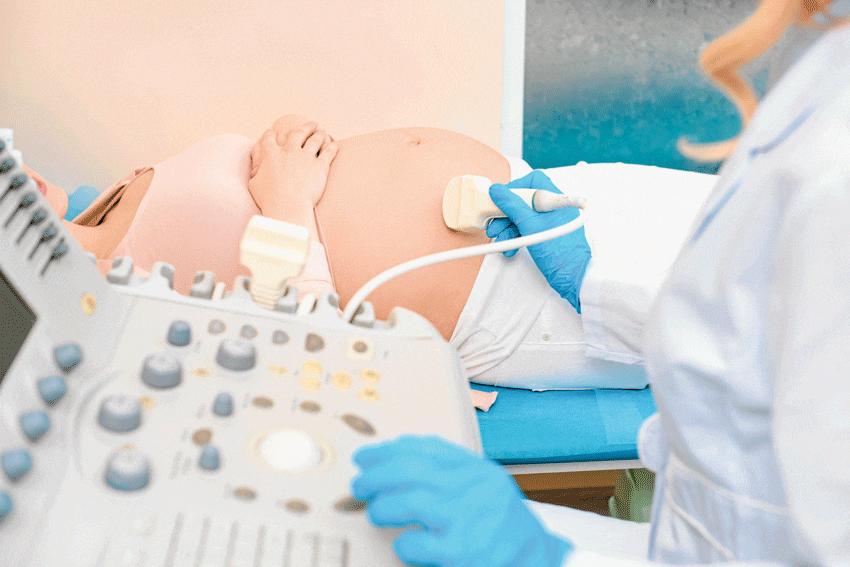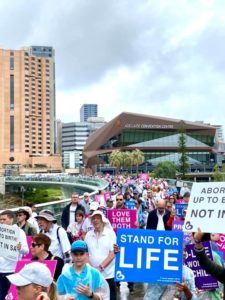
Statistics reveal the falsity of the abortion industry
For the purposes of the law of the Commonwealth, a child born alive is a person. The duty of a health practitioner to provide medical care or treatment to a child born alive as a result of an abortion is no different than the duty owed to provide medical care or treatment to a child born alive other than as a result of an abortion.
I think the average person would find these two very simple statements uncontroversial, but the abortion industry has a way of turning even the slightest display of humanity into a dispute.
Nationals MP George Christensen has proposed a bill, the Human Rights (Children Born Alive Protection) Bill 2021, to include the above two principles in Commonwealth law. Essentially, it would require that babies who are born alive after botched abortions are given the same medical care as babies born alive in other circumstances.
THE ABORTION INDUSTRY WILL TRY TO MARGINALISE MR CHRISTENSEN AND SUGGEST HIS VIEWS ARE EITHER EXTREME OR UNNECESSARY, BUT THE TEXT OF THE BILL SHOWS HE IS RIGHT ON THE MONEY.
The abortion industry – and it is an industry – have unsurprisingly come out and strongly rejected the bill, calling it “nonsensical.” In an interview with The Guardian, Catriona Melville, the deputy medical director of abortion giant Marie Stopes Australia, said the bill proposed a “policy for a circumstance that by the nature of the procedure wouldn’t occur.”
Dr Melville said that abortions beyond the 14-16 week mark are “very, very uncommon” and Christensen’s proposal was responding to a “myth” about abortion.
Let’s see who is the one spreading myths, shall we?
During his speech in Parliament, Mr Christensen quoted statistics that showed that in the five years from 2012-2016, there were 1626 late-term abortions in Victoria, 198 of which resulted in live births.
Between 2005 and 2015 in Queensland, there were another 204 babies born alive, and in Western Australia, of the 27 babies born alive between 1999-2016 following abortion, all but six of them at least 20 weeks’ gestation. Neither South Australia, Tasmania, the Northern Territory nor the Australian Capital Territory publish statistics so, while unknown, the picture Australia-wide is obviously far greater than the Victorian and Queensland figures.
It is clear that late-term abortions are not “very, very uncommon” as the Marie Stopes spin doctors would have you believe, they occur near-daily in Victoria alone. Also not “very, very uncommon” are the babies born alive from these late-term abortions. In Victoria alone, one baby every 10 days is born alive after an attempted abortion.

It’s not only the statistics that make this clear, the medical guidelines for abortion also concede that this is a frequent enough occurrence that doctors need to know how to deal with it.
The Queensland Health clinical guidelines for termination of pregnancy say that when a live birth occurs, medical staff should “handle baby gently and carefully and wrap to provide warmth,” and offer opportunities for the family to cuddle the baby. But the guidelines also callously state: “Do not provide life sustaining treatment (eg gastric tubes, IV lines, oxygen therapy)… Document date and time end of life occurs.”
Or as Mr Christensen put it: “leave the baby to die.” Similarly, a document distributed to South Australian MPs from the Attorney-General’s Department or the Health Department prior to the recent abortion vote in that Parliament said that in these circumstances, “palliative care is offered, the baby is wrapped in a blanket and the mother is given the opportunity to hold the baby as it dies.”
So, it happens. It happens frequently enough for there to be reportable statistics and frequently enough to require some form of medical guidance on how to deal with it. If that’s the case, why are abortionists’ arguing that the law is unnecessary?
Three reasons abortion providers don’t want this law
First, it is an acknowledgment, right there in legislation, that abortion is a gruesome business that sometimes results in babies being born alive and, without the threat of legal consequences for doctors, would be left to die without medical care.
Second, it places their doctors in the conflicted position of having two patients to whom they owe a duty of care, the mother and the baby, where successfully exercising their “duty” to provide so-called “health care” to the mother in these circumstances would be ensuring the death of the baby, to whom they also owe a duty of care. This unresolvable conflict of interest exposes the clash between the interests of mother and child that abortion creates.
And finally, it would open the doctors up to lawsuits from both the mother and from the child. The mother could sue for the cost of raising the child that the doctor was supposed to abort, while the child could sue for “wrongful life,” particularly if disabilities result from the botched abortion. And because the abortion industry is all about the money, this is what scares them most.

The abortion industry and pro-abortionists will try to marginalise Mr Christensen and suggest his views are either extreme or unnecessary, but the text of the bill shows that he is right on the money. The law should not only be passed federally, but also in every state, where these horrible abortion laws exist.
[I should point out that Mr Christensen’s law wouldn’t make a difference in New South Wales, because these requirements already exist in our abortion laws, thanks to the heroic work that was done during the abortion campaign by Tanya Davies and Kevin Conolly, who put their parliamentary careers on the line to make sure that the obligation to provide life-saving care was placed into that otherwise horrible law.
Nor would they make a difference in South Australia, where lobbying from Love Adelaide also saw similar provisions put in to their recently-liberalised abortion laws.]
Related:
